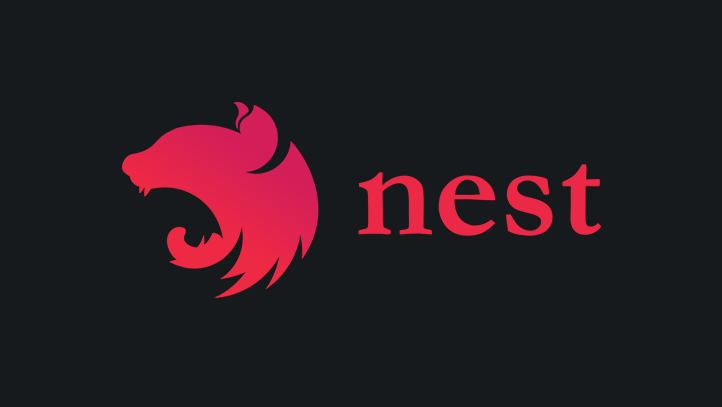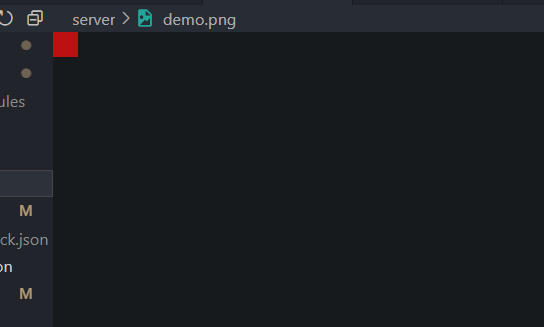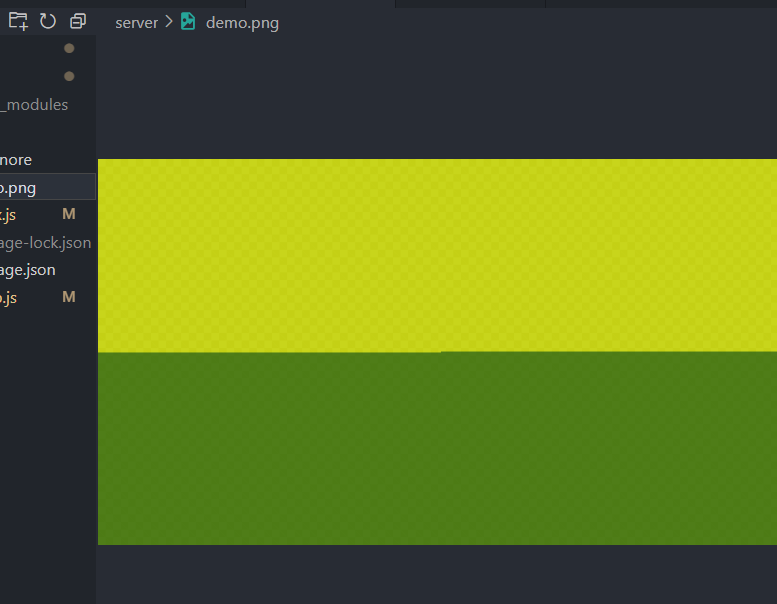Playing with raw image bytes
Hello, guys today let's play with image raw bytes. What I am gonna do is, manipulate the image raw pixel bytes, and make something silly, this is fun stuff to do. This article contains some theory as well as practical implementation, So let's go…
As we know an image is formed by a bunch of pixels together, pixel is nothing but a combination of RGB (Red, Green, Blue) or RGBA (Red, Green, Blue, Alpha) each with take 1 byte.
The images we view with extensions like PNG or JPG are the compressed formats of the image, PNG is lossless that PNG uses algorithms like DEFLATE to compress without losing the pixel and JPG is lossy compression that it will lose some pixel so there will be some loss in the image quality, if we want to view the image without the compression we need to convert the image to the BMP (Bitmap Image File) or there are also some other formats, if we convert to this we get the uncompressed image. But we don't need this we will extract those raw bytes and play with them and we will again convert them back to PNG or JPG.
First, let's set the client to upload images, I will set a simple react application for this
import axios from "axios";
import { useState } from "react";
import "./App.css";
function App() {
const [img, setImg] = useState(null);
const [pending, setPending] = useState(false);
const handleImg = (e) => {
setImg(e.target.files[0]);
};
const handleSubmit = async (e) => {
e.preventDefault();
if (!img) return;
const formData = new FormData();
formData.append("img", img);
try {
setPending(true);
const response = await axios.post("http://localhost:4000/img", formData);
console.log(response.data);
} catch (error) {
console.log("Error uploading image:", error);
} finally {
setPending(false);
}
};
return (
);
}
export default App;
So this is simple code, to upload the images, the main part is on the server side.
Now let's manually calculate the image bytes and check with the server-side code.
I have chosen the below image.

The image is from my previous article thumbnail. So this is a PNG file, if we go to the properties section, we can see the width and the height of the image. For this the width and the height are 722 x 407 which is equal to 293854 pixels, also this is not a total number of bytes, it is just a total number of pixels. As we know each pixel is either 3 or 4 bytes, RGB or RGBA. So if the above image is RGB the total bytes would be 722 x 407 x 3 = 881562 or if the image has the alpha channel, then the total bytes would be 722 x 407 x 4 = 1175416.
Let's some to the server side, I am using the node js.
There is a library called multer to parse multiform data.
app.post("/img", upload.single("img"), async (req, res) => {
const arr = req.file.buffer
console.log(arr.length) //output: 30929
res.send("success")
});
We store the image bytes in the buffer array, if we take the length of the buffer array the answer is 30929, there are these many bytes in the array, but wait the total number of bytes should be 1175416 right? What happens here is multer doesn't do some compression or anything, it just gets the image from the user and stores it in the buffer as it is, so we uploaded the PNG file, the buffer you are seeing is the same size as the PNG image size.
Now let's change the bytes in the compressed image byte.
app.post("/img", upload.single("img"), async (req, res) => {
const arr = req.file.buffer;
console.log("multer " arr.length);
fs.writeFile("output.png", arr, (err) => {
console.log(err);
});
res.send("successfull");
});
I used the fs to create a new image with the existing one. So now if we change the first-byte arr[0] = 231, the image will not open.

Because the first certain bytes are reserved for the metadata, so if we change those metadata, and then the image can corrupt.
So let's jump to the 500th byte. arr[500] = 123, then write the image. But now, the image is broke, we should not directly manipulate the compressed image bytes because it can change the compression algorithm encoded data.
We need the raw bytes from the image, and then we can independently manipulate the bytes, and for that, we can use a sharp library.
npm install sharp
install the sharp, Now I will create a separate file to handle those logics,
sharp.js
export async function convert(buffer) {
try {
const data = await sharp(buffer).metadata();
console.log(data)
}catch(err){
console.log(err)
}
}
This is an async function, Now let's get the metadata from the png we have uploaded.
{
format: 'png',
size: 30929,
width: 722,
height: 407,
space: 'srgb',
channels: 4,
depth: 'uchar',
density: 72,
isProgressive: false,
hasProfile: false,
hasAlpha: true
}
This is the metadata from the image, as we can see the last data hasAlpha: true so it has the alpha channel, so each pixel is 4 bytes.
Now let's get the raw bytes from the image.
const rawBytes = await sharp(buffer)
.raw()
.toBuffer({ resolveWithObject: true });
console.log(rawBytes.data.length) //1175416
Now we can see the array length is equal to our calculation. So this image contains 1175416 bytes. Now we are free.. to change any bytes, Now the metadata is not stored in the buffer, the buffer only contains the raw bytes of the image.
Let's change only one pixel to red.
rawBytes.data[0] = 225; //red rawBytes.data[1] = 10; //green rawBytes.data[2] = 10; //blue rawBytes.data[3] = Math.floor(0.8 * 255); //alpha

As we can one pixel is changed to red, we need to zoom in on the image to see the pixel change.
Now let's divide the image and change the color, the top half is yellow and the bottom half is green
const div = rawBytes.data.length / 2;
for (let i = 0; i
We are incrementing the loop by 4 times because we are changing one pixel at each iteration. Now the output will be like this.

We can see the transparency in this image because the Alpha channel is set to 0.8
I forgot to tell for writing the image, we don't need fs to write a new image, we can use the sharp itself.
await sharp(rawBytes.data, {
raw: {
width: data.width,
height: data.height,
channels: data.channels,
},
})
.png()
.toFile("demo.png");
we are generating the new image with the same metadata.
Here's the full server side code,
//index.js
import express from "express";
import dotenv from "dotenv";
import multer from "multer";
import cors from "cors";
import { convert } from "./sharp.js";
const app = express();
dotenv.config();
app.use(cors({ origin: "http://localhost:5173" }));
const storage = multer.memoryStorage();
const upload = multer();
app.post("/img", upload.single("img"), async (req, res) => {
const arr = req.file.buffer;
await convert(arr);
res.send("successful");
});
app.listen(process.env.PORT, () => {
console.log("server started");
});
//sharp.js
import sharp from "sharp";
export async function convert(buffer) {
try {
const data = await sharp(buffer).metadata();
console.log(data);
//raw data
const rawBytes = await sharp(buffer)
.raw()
.toBuffer({ resolveWithObject: true });
console.log(rawBytes.data.length);
const div = rawBytes.data.length / 2;
for (let i = 0; i
So this is it, We just played with those pixels. and finally this article thumbnail is made with this one line in the loop.
rawBytes.data[i] = Math.floor(Math.random()*256)
I just randomly changed each byte ?
for the full code check out my repo: pixel-byte-manipulation
if there are any mistakes kindly do comment
Thank you!!!
-
 Tips for outputting C++ custom class values through operator overloadingOutputting Values from Custom Classes: Utilizing OperatorProgramming Posted on 2025-04-14
Tips for outputting C++ custom class values through operator overloadingOutputting Values from Custom Classes: Utilizing OperatorProgramming Posted on 2025-04-14 -
 Solve the \\"String value error\\" exception when MySQL inserts EmojiResolving Incorrect String Value Exception When Inserting EmojiWhen attempting to insert a string containing emoji characters into a MySQL database us...Programming Posted on 2025-04-14
Solve the \\"String value error\\" exception when MySQL inserts EmojiResolving Incorrect String Value Exception When Inserting EmojiWhen attempting to insert a string containing emoji characters into a MySQL database us...Programming Posted on 2025-04-14 -
 When to use "try" instead of "if" to detect variable values in Python?Using "try" vs. "if" to Test Variable Value in PythonIn Python, there are situations where you may need to check if a variable has...Programming Posted on 2025-04-14
When to use "try" instead of "if" to detect variable values in Python?Using "try" vs. "if" to Test Variable Value in PythonIn Python, there are situations where you may need to check if a variable has...Programming Posted on 2025-04-14 -
 Why does ASP.NET MVC4 bundle not include `.min.js` file?ASP.NET MVC4 Bundler and .min.js Files: A Common Problem Using the ASP.NET MVC4 bundler, developers sometimes encounter a problem where minimized Jav...Programming Posted on 2025-04-14
Why does ASP.NET MVC4 bundle not include `.min.js` file?ASP.NET MVC4 Bundler and .min.js Files: A Common Problem Using the ASP.NET MVC4 bundler, developers sometimes encounter a problem where minimized Jav...Programming Posted on 2025-04-14 -
 Causes and solutions for Face Detection Failure: Error -215Error Handling: Resolving "error: (-215) !empty() in function detectMultiScale" in OpenCVWhen attempting to utilize the detectMultiScale() m...Programming Posted on 2025-04-14
Causes and solutions for Face Detection Failure: Error -215Error Handling: Resolving "error: (-215) !empty() in function detectMultiScale" in OpenCVWhen attempting to utilize the detectMultiScale() m...Programming Posted on 2025-04-14 -
 How to handle dot characters (.) in MVC Web API 2 request parameters?Addressing the Dot Character in MVC Web API 2 Request ParametersIn MVC Web API 2, it is convenient to work with request parameters that adhere to a co...Programming Posted on 2025-04-14
How to handle dot characters (.) in MVC Web API 2 request parameters?Addressing the Dot Character in MVC Web API 2 Request ParametersIn MVC Web API 2, it is convenient to work with request parameters that adhere to a co...Programming Posted on 2025-04-14 -
 Why Does Microsoft Visual C++ Fail to Correctly Implement Two-Phase Template Instantiation?The Mystery of "Broken" Two-Phase Template Instantiation in Microsoft Visual C Problem Statement:Users commonly express concerns that Micro...Programming Posted on 2025-04-14
Why Does Microsoft Visual C++ Fail to Correctly Implement Two-Phase Template Instantiation?The Mystery of "Broken" Two-Phase Template Instantiation in Microsoft Visual C Problem Statement:Users commonly express concerns that Micro...Programming Posted on 2025-04-14 -
 How Can You Define Variables in Laravel Blade Templates Elegantly?Defining Variables in Laravel Blade Templates with EleganceUnderstanding how to assign variables in Blade templates is crucial for storing data for la...Programming Posted on 2025-04-14
How Can You Define Variables in Laravel Blade Templates Elegantly?Defining Variables in Laravel Blade Templates with EleganceUnderstanding how to assign variables in Blade templates is crucial for storing data for la...Programming Posted on 2025-04-14 -
 How to prevent child elements from inheriting the CSS blur effect of parent element?CSS Blur Issue: Excluding Child Elements from Parent's Blur EffectWhen applying a blur filter to a parent element using CSS, it's unavoidable ...Programming Posted on 2025-04-14
How to prevent child elements from inheriting the CSS blur effect of parent element?CSS Blur Issue: Excluding Child Elements from Parent's Blur EffectWhen applying a blur filter to a parent element using CSS, it's unavoidable ...Programming Posted on 2025-04-14 -
 How to effectively modify the CSS attribute of the ":after" pseudo-element using jQuery?Understanding the Limitations of Pseudo-Elements in jQuery: Accessing the ":after" SelectorIn web development, pseudo-elements like ":a...Programming Posted on 2025-04-14
How to effectively modify the CSS attribute of the ":after" pseudo-element using jQuery?Understanding the Limitations of Pseudo-Elements in jQuery: Accessing the ":after" SelectorIn web development, pseudo-elements like ":a...Programming Posted on 2025-04-14 -
 Why Am I Getting a "Could Not Find an Implementation of the Query Pattern" Error in My Silverlight LINQ Query?Query Pattern Implementation Absence: Resolving "Could Not Find" ErrorsIn a Silverlight application, an attempt to establish a database conn...Programming Posted on 2025-04-14
Why Am I Getting a "Could Not Find an Implementation of the Query Pattern" Error in My Silverlight LINQ Query?Query Pattern Implementation Absence: Resolving "Could Not Find" ErrorsIn a Silverlight application, an attempt to establish a database conn...Programming Posted on 2025-04-14 -
 Process optional blanks in regular expressions to accurately extract dataOptional Whitespace Regex: Ignoring Spaces in Attribute ValuesIn programming, there are scenarios where you need to handle instances where strings con...Programming Posted on 2025-04-14
Process optional blanks in regular expressions to accurately extract dataOptional Whitespace Regex: Ignoring Spaces in Attribute ValuesIn programming, there are scenarios where you need to handle instances where strings con...Programming Posted on 2025-04-14 -
 How Can I Synchronously Iterate and Print Values from Two Equal-Sized Arrays in PHP?Synchronously Iterating and Printing Values from Two Arrays of the Same SizeWhen creating a selectbox using two arrays of equal size, one containing c...Programming Posted on 2025-04-14
How Can I Synchronously Iterate and Print Values from Two Equal-Sized Arrays in PHP?Synchronously Iterating and Printing Values from Two Arrays of the Same SizeWhen creating a selectbox using two arrays of equal size, one containing c...Programming Posted on 2025-04-14 -
 How Do I Efficiently Select Columns in Pandas DataFrames?Selecting Columns in Pandas DataframesWhen dealing with data manipulation tasks, selecting specific columns becomes necessary. In Pandas, there are va...Programming Posted on 2025-04-14
How Do I Efficiently Select Columns in Pandas DataFrames?Selecting Columns in Pandas DataframesWhen dealing with data manipulation tasks, selecting specific columns becomes necessary. In Pandas, there are va...Programming Posted on 2025-04-14 -
 How Can I UNION Database Tables with Different Numbers of Columns?Combined tables with different columns] Can encounter challenges when trying to merge database tables with different columns. A straightforward way i...Programming Posted on 2025-04-14
How Can I UNION Database Tables with Different Numbers of Columns?Combined tables with different columns] Can encounter challenges when trying to merge database tables with different columns. A straightforward way i...Programming Posted on 2025-04-14
Study Chinese
- 1 How do you say "walk" in Chinese? 走路 Chinese pronunciation, 走路 Chinese learning
- 2 How do you say "take a plane" in Chinese? 坐飞机 Chinese pronunciation, 坐飞机 Chinese learning
- 3 How do you say "take a train" in Chinese? 坐火车 Chinese pronunciation, 坐火车 Chinese learning
- 4 How do you say "take a bus" in Chinese? 坐车 Chinese pronunciation, 坐车 Chinese learning
- 5 How to say drive in Chinese? 开车 Chinese pronunciation, 开车 Chinese learning
- 6 How do you say swimming in Chinese? 游泳 Chinese pronunciation, 游泳 Chinese learning
- 7 How do you say ride a bicycle in Chinese? 骑自行车 Chinese pronunciation, 骑自行车 Chinese learning
- 8 How do you say hello in Chinese? 你好Chinese pronunciation, 你好Chinese learning
- 9 How do you say thank you in Chinese? 谢谢Chinese pronunciation, 谢谢Chinese learning
- 10 How to say goodbye in Chinese? 再见Chinese pronunciation, 再见Chinese learning

























